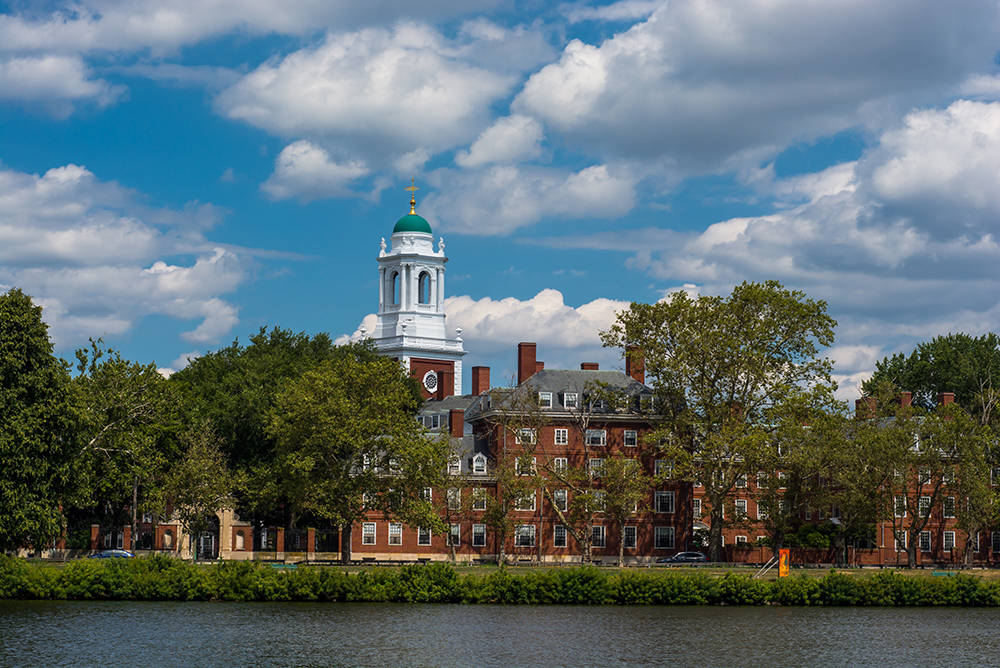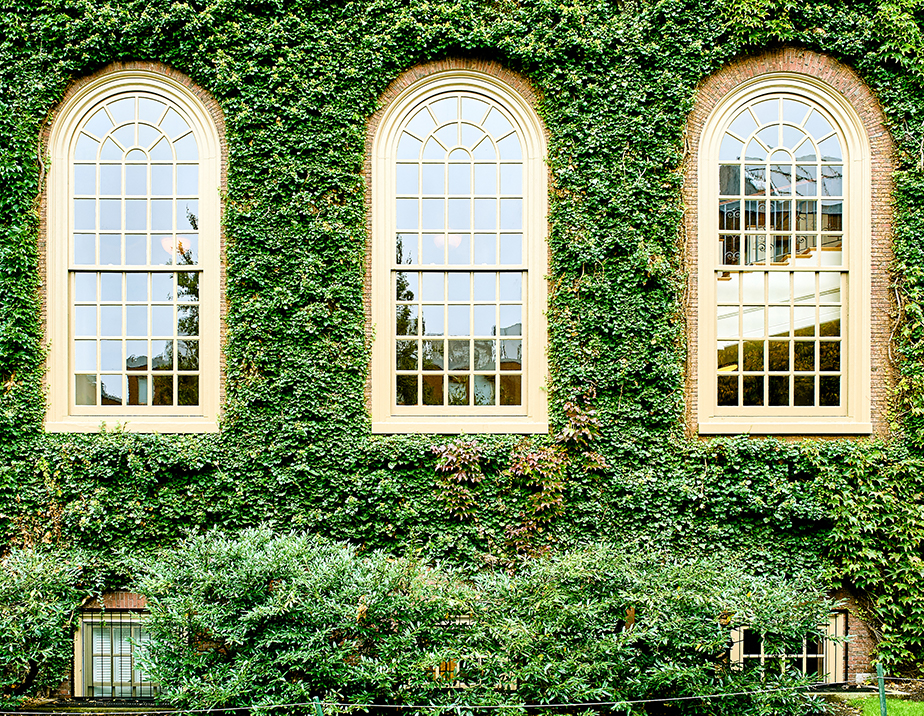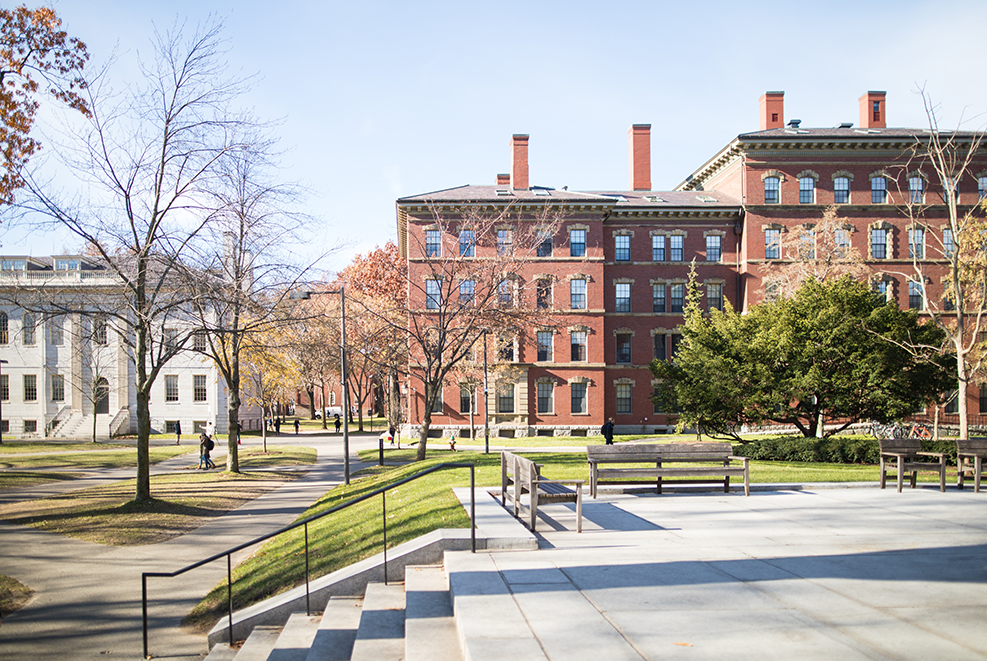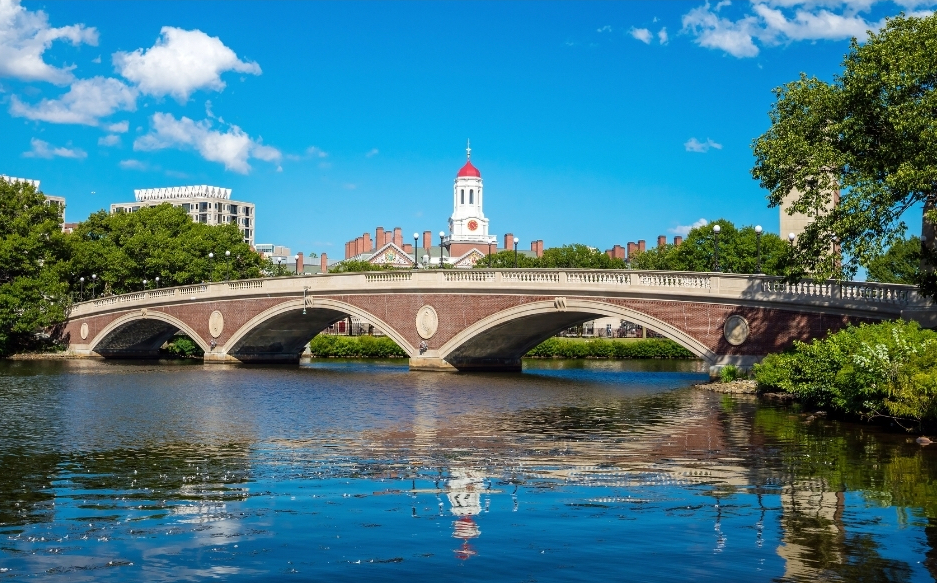The Ivy Scholars guide to Harvard University’s culture, admissions, and other essential information for prospective students and their families.
Location: Cambridge, Massachusetts
Mascot: John Harvard, The Pilgrim
Type: Private Research Institution
Population: 7,100 undergrads, 21,300 total

Built in 1636 along the Charles River a few miles west of Boston, Harvard University is considered the oldest institute for higher learning in the United States. Known for its academic prestige, this Ivy League has the largest endowment of any academic institution and is a highly residential college with a postgraduate focus. It’s often said that those who graduate from Harvard will become the political and scientific elite of the world.

Year Founded: 1636
4 Year Graduation Rate: 98%
Gender Distribution: 51% male, 49% male
Acceptance Rate: 3.5%
Residency: 17% in state, 62% out of state, 21% international
Location Type: Urban
Schedule System: Semesters
Student/Faculty Ratio: 6:1
Average Class Size: 12
Demographics: 41.8% Caucasian, 31.16% Other, 13.5% Asian, 8.19% Hispanic/Latino, 5.35% Black
US News Rankings:
Independent Rankings:
Application Deadlines:
Notification Dates:
Acceptance Rates:
Average Applicant Pool: 56,900
Average Number of Applicants Accepted: 2,000
Average Number Enrolled: 1,600
Application Systems: Common App, Coalition App
Average GPA: 4.2 weighted
SAT Scores: 25th percentile – 1500, 75th percentile – 1580
ACT Scores: 25th percentile – 34, 75th percentile – 36
Demonstrated Interest: Harvard does not consider demonstrated interest.
Recommendation Letter Policies:
Harvard requires two teacher recommendations in different academic subjects. Additional recommendation letters are accepted after you apply.
Harvard Essay Prompts:
Transfers:
Enter your information below and submit for access to the guide.
Core Requirements:
Courses of Study:
Majors are referred to as “Concentrations”. Popular majors include: Computer Science, Political Science and Government, History, Public Health, Psychology, and English.
Minors are referred to as “secondary fields”.
AP Credit Policies:

Admissions Criteria:
The three key aspects of admissions are: academic excellence, extracurricular distinction, and personal qualities. Students who excel in all of these areas are the ones Harvard actively looks for.
All applicants are rated on six-point scales (with 1 the highest) in the following categories: academic, extracurricular, athletic, recommendation letters, personal, and alumni interview/overall rating. These grades may also have a +/- score, like letter grades in school. The overall rating is the most important, students with an overall rating of 1 are always accepted, those with one of 3- or below almost never are. The two most important categories within their rating scale for the overall rating are academic and personal.
Harvard states on their website the questions they try to answer about incoming students. The overall theme of the questions is: What has the student done, what does the student care about, and what does the student have the potential to do?
Legacy status is considered. Recruited athletes do have a boost in admissions, so long as their application is otherwise also strong.
Almost all students admitted to Harvard participate in an alumni interview, although it is technically optional.
What is Harvard Looking For?
Their goal with the admissions process is to separate the students who are “perfect” but just good, and the students who are “perfect” and great. The review process is holistic, with candidates examined by individuals, the most qualified then examined by regional subcommittees, and finally the top candidates debated by the full committee.
They want students who will contribute meaningfully to life on campus, both as leaders and as people. They want to see both the academic and social impact admitted students will have on the campus environment. While students should have a singular focus, they should be strong across the board academically and in terms of their personal characteristics.
Thanks to a recent lawsuit, Harvard’s admission rubrics have been released. While all ratings are still subjective, they do give an idea of what the school is looking for. Students earning a perfect 1 for academics will not only have perfect grades and test scores, but show a strong potential for future academic growth, and evidence of learning and conducting research outside the classroom. Test scores and grades which are merely excellent will earn a rating of 3.
A 1 in extracurriculars goes to students who have shown distinction in their activities at a national or international level, with potential for future growth. A 3 is for students who participate deeply, but don’t have any particular distinction to differentiate them. 2s go to students with statewide or regional distinction and a high level of involvement.
The athletic rating is the most straightforward. 1 is for recruited varsity athletes, 2 is for strong athletes who are recruited, and 3 is for students who did a lot of sports, but not at a high level. Scores of 4 or below represent students who didn’t or couldn’t participate in sports.
The personal rating, which was the main subject of the lawsuit, is also the most subjective. The rubric denotes students scoring a 1 are “outstanding” while those scoring a 6 display “Worrisome personal qualities.” Being “generally positive” will earn a 3, being “bland” a 4. The main takeaways are don’t be a terrible person, and don’t be boring, especially in the interview.
The letter of recommendation ratings are more subjective, but follow that the more highly praised a student is by teachers, the better the score. Thus the best student ever/in ten years, will likely receive a 1, while a generally positive letter will earn a 3.
Harvard Strategy:
Students who earn a score of 1 in any of the categories for admission are incredibly rare, and those who do, especially in social, academic, or extracurricular, are far more likely to be admitted. Thus your main focus should be determining where best you can stand out, and shoring up other areas so that they pass muster with a 2 or 3.
The students with the highest chances of admissions are the special cases: recruited athletes, legacy admits, children of faculty, and special interest students recommended by deans. As most students will not fall into any of these categories, they should instead focus on where they can best stand out, and making sure that they have accomplished things of note in their chosen area.
Harvard has and maintains a commitment to diversity; this was part of the reason for the lawsuit. Thus students who stand out from their peers are of greater interest, and have better chances of admission overall.
For the best shot at admissions, your scores in academics, social, extracurriculars, and recommendations should be 3 or higher. Athletics doesn’t hurt you if it’s low, but can help if it’s a 1. At least one of your scores should reach a two, and the more you have in that range, the greater your chances. Students with a 1 in at least one category had their admissions chances increase ten-fold, students with an overall score of 1 were always admitted. Thus you should hone your strengths, and shore-up any potential weaknesses.
Honors Programs:
Research Availability:
Study Abroad:
Business Options:
Harvard does not have an explicit pre-business track or concentration. With that in mind, there are majors available that are geared towards a pre-business mindset.
Pre-Med Options:
While Harvard does not have a pre-med program, they do provide recommendations on which courses to take to remain on a pre-med track.
Pre-Law Options:
Computer Science Options:
Additional Specialty Programs:
Programs for High Schoolers:
Harvard’s Summer Programs have two offerings for advanced high schoolers, both a two-week and a seven-week program. These allow students to get a feel for college life, and a sense of what they might learn. The longer program allows students to take courses for credit.

School Motto: Truth
Mission and Values:
Harvard Housing and Dining System:
Harvard’s Residential College System consists of four residential neighborhoods called Yards. First-year students live in one of 17 dorms next to Harvard Yard and eat the majority of their meals in Annenberg Hall. Classrooms, libraries, mail, and Annenberg are all within a five-minute walk of every first-year dorm. Most dorms are suites with two to four bedrooms and a common room.
Housing Statistics:
Campus & Surrounding Area:
Transportation:
Traditions:
Student-Run Organizations:
Sports:
Greek Life:
Greek organizations are not seen as compatible with the university’s Jesuit mission, so none are recognized officially by the school There are still 10 fraternities and 11 sororities at the school.
Nightlife:
While Harvard isn’t known for its nightlife, being sandwiched between the cities of Cambridge and Boston offers plenty of opportunities for a fun night out.

Yearly Cost of Attendance:
Financial Aid, Scholarships and Grants:
At Harvard University, the Griffin Financial Aid Office provides 100% need-based aid allowing students of all financial backgrounds the opportunity to attend Harvard. For families with annual incomes below $65,000, the expected contribution is zero and families with incomes between $65,000-$150,000 will contribute between 0%-10% of their annual income.

Ivy Scholars is the leading educational consultant in Sugar Land, Texas, providing admissions coaching, test prep, and more to help students enroll at top tier schools.

Call us now: +1 (281) 215-5148
.
Get expert tips, admissions updates, and resources delivered straight to your inbox.


